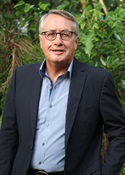Lilley
Margin: Labor 1.3%
Region: Inner Brisbane, Queensland
In a nutshell: Wayne Swan’s seat of Lilley went under with Labor’s statewide rout in 1996, and little remains of his margin after successive swings in 2010 and 2013.
Candidates in ballot paper order

|
DAVID KINGSTON SHARAN HALL SIMON JAMES HOLMICK WAYNE SWAN CLAIRE OGDEN |
Wayne Swan’s electorate of Lilley covers inner northern Brisbane from McDowall and Everton Park east through Chermside and Virginia to the bayside between the Brisbane and Pine rivers, including residential Brighton at the northern end and industrial Eagle Farm in the south. On its creation in 1913 it extended as far north as Gympie, and it would not become entirely urban until Petrie was created to accommodate Brisbane’s outskirts with the enlargement of parliament in 1949. The seat leaned conservative for much of its history, with Labor ekeing out occasional victories in 1943, 1946, 1961 and 1972. A decisive shift came when Elaine Darling gained the seat for Labor in 1980, then consolidated with an 8.4% swing in 1983.
Swan first came to the seat upon Darling’s retirement in 1993, but together with all but two of his Queensland Labor colleagues he was unseated in 1996. He was then able to recover the seat in 1998, accounting for a 0.4% post-redistribution margin with a swing of 3.5%. Swings in Labor’s favour were recorded at the next three elections, but it was brought back to the marginal zone by a 5.5% swing to the Liberal National Party in 2010. Labor’s dire polling throughout its second term in government encouraged fears about Swan’s capacity to retain the seat in 2013, but he was able to secure a 1.3% margin in the face of a modest swing of 1.9%.
Swan’s path to parliament began with staff positions working for Opposition Leader Bill Hayden and Hawke government ministers Mick Young and Kim Beazley, before he took on the position of state secretary of the Queensland party in 1991. He was elevated to the shadow ministry after recovering his seat in 1998, taking on the family and community services portfolio, and remained close to his former boss Beazley. Mark Latham famously described Swan and his associates as “roosters” when Beazley conspired to recover the leadership in 2003, but nonetheless retained him in his existing position during his own tenure in the leadership. Swan was further promoted to Treasury after the 2004 election defeat and retained it in government, despite suggestions Rudd had promised the position to Lindsay Tanner in return for his support when he toppled Kim Beazley as leader in December 2006.
Despite their shared background at the same high school in Nambour, a political rivalry between Swan and Kevin Rudd started early, with the former emerging as part of the AWU grouping of the Right and the latter forming part of the Right’s “old guard”. Swan was in the camp opposed Rudd at successive leadership challenges, including Rudd’s move against Beazley in December 2009, his toppling by Julia Gillard in June 2010, and the three leadership crises which transpired in 2012 and 2013. As Rudd marshalled forces for his first push in February 2012, Swan spoke of his “dysfunctional decision making and his deeply demeaning attitude towards other people including our caucus colleagues”. When Rudd finally succeeded in toppling Gillard in June 2013, Swan immediately resigned as deputy leader and Treasurer. Unlike many of his colleagues he resolved to continue his career in parliament, which he has continued to do in opposition on the back bench.
Analysis by William Bowe. Read William’s blog, The Poll Bludger.


